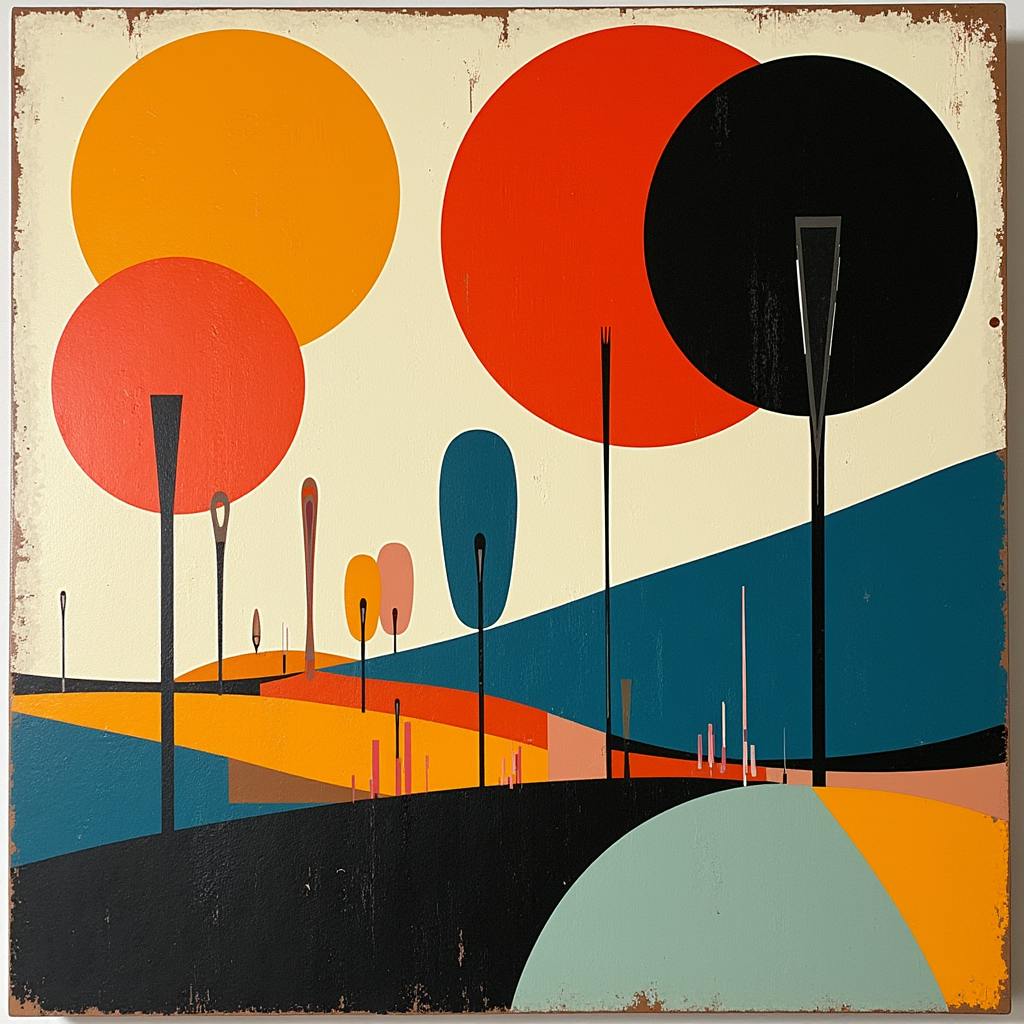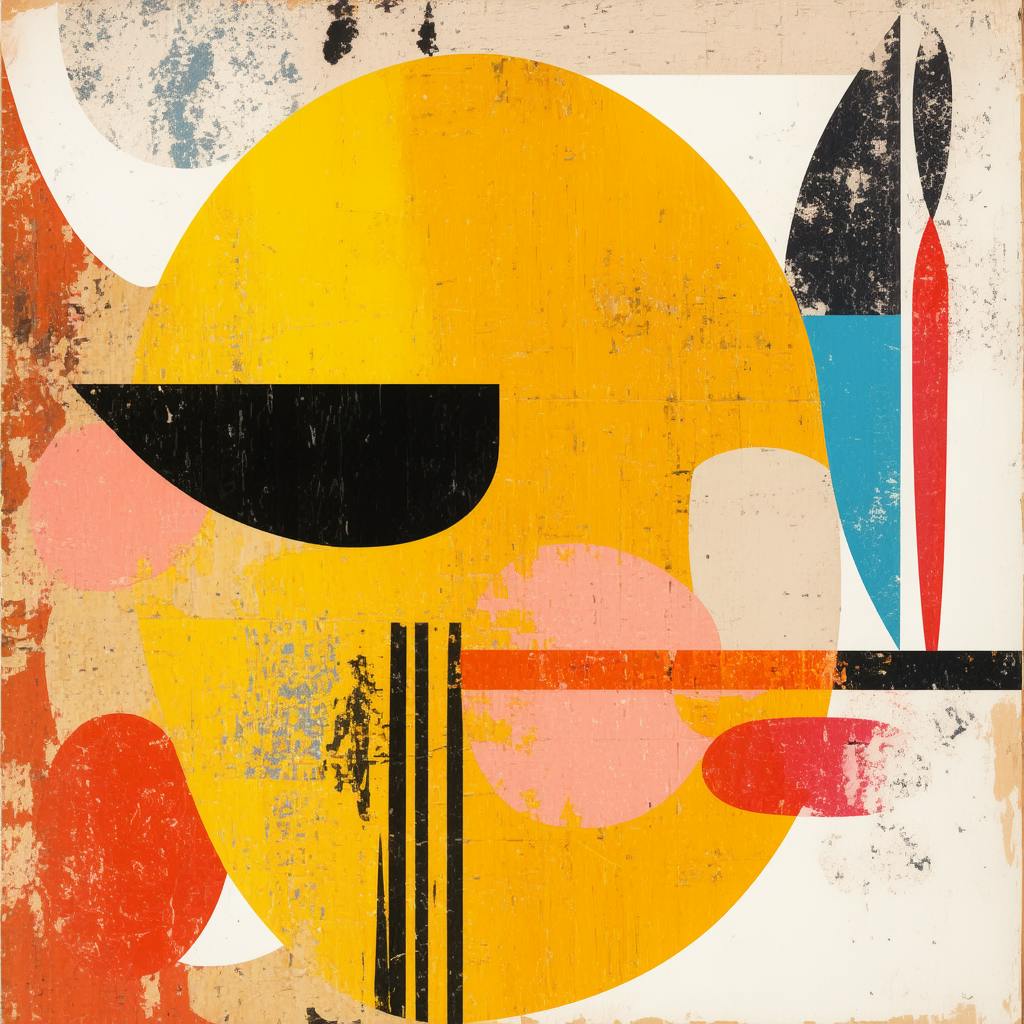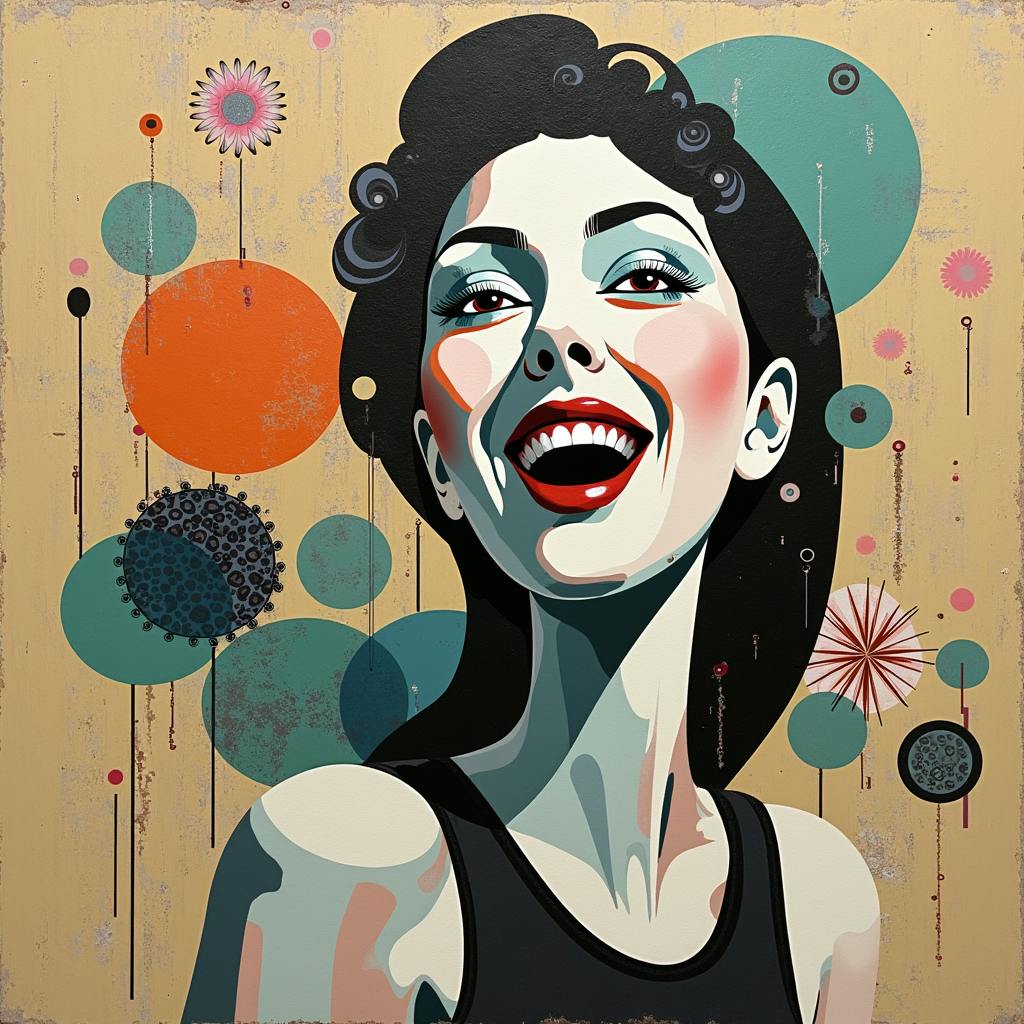Abstract art
With its vibrant colors, dynamic shapes, and ethereal compositions, often elicits a spectrum of emotions and interpretations. While some view it as a mere departure from realism, others see a profound expression of the artist’s inner world. This art form, which emerged in the early 20th century, eschews direct representation, challenging viewers to engage in a more cerebral and emotional exploration. Today, abstract art stands as a cornerstone of contemporary artistic discourse, inviting an intriguing analysis of its fundamental elements and impact.
Abstract art transcends mere visual aesthetics; it is an exploration of the seven elements of art—line, shape, form, color, value, space, and texture—in their most liberated forms. Understanding these elements is crucial to appreciating the complexity and beauty embedded in abstract works. Line, for instance, in abstract art can vary in width and orientation, directing the viewer’s gaze and evoking a sense of motion or tranquility. Artists such as Jackson Pollock used expressive, erratic lines to convey motion and chaos, creating engaging compositions.
Shape and form
Devoid of recognizable figurations, beckon the observer to find meaning and patterns within the abstraction. Through strategic placement and interaction of shapes and forms, artists establish harmony or tension, drawing the viewer into a deeper dialogue with the piece. The advent of cubism, pioneered by Pablo Picasso and Georges Braque, exemplifies the use of geometric shapes to fracture and reconstruct reality, challenging viewers to reconsider familiar objects from multiple perspectives.
Color
A pivotal component of abstract art, carries emotional weight and narrative power, often setting the tone or mood of the composition. Artists like Mark Rothko harness large swathes of bold colors to incite introspection and emotional resonance. The interplay of value—the lightness or darkness of a color—further transforms a composition, giving depth and dimension to otherwise flat surfaces.
Space and texture
In abstract art function metaphorically as well as literally. Negative space—the areas between and around subjects—provides a canvas for imagination, inviting viewers to fill in the gaps with their personal experiences or interpretations. Texture, whether implied through brushstrokes or physically present in mixed media, adds an additional layer of engagement, allowing for tactile exploration in a traditionally visual medium.

AI made with Stephanie Jagiello
Abstract art, characterized by its nonfigurative, non-representational nature, provokes perennial questions. What is the significance of abstraction in art history? How does one derive meaning from something seemingly devoid of narrative? Abstract art challenges conventional understanding, asking viewers to trust their intuition and emotional response. It allows art to transcend language, becoming a universal form of communication grounded in personal and subjective interpretation.
In unraveling the beauty of abstract art, we realize that its value lies not in explaining all, but in its ability to suggest myriad possibilities. The abstract artist, like a maestro, orchestrates a symphony of lines, colors, and forms, evoking an emotional and intellectual response. This art form, at its core, provides a platform for innovation and creativity, a place where artists and viewers alike can explore the boundless potentials of expression.
FAQ: Understanding Abstract Art
What is the main concept behind abstract art?
Abstract art is an artistic movement that breaks away from the traditional representation of physical objects. The main concept is to express ideas and emotions through shapes, colors, forms, and gestural marks, rather than attempting to accurately depict visual reality. Abstract artists explore the boundaries of art by emphasizing imagination and interpretation. Their works invite viewers to experience and interpret rather than merely observe, evoking emotions and thoughts that are not confined by the literal representation of the world.
How does abstract art convey complex beauty?
Abstract art conveys complex beauty through its ability to evoke emotions, provoke thought, and stimulate imagination without relying on familiar visual cues. This form of art prompts a personal response by engaging viewers in an active process of interpretation. The complexity arises from the following elements:
- Color: Abstract artists use bold, contrasting, or harmonious colors to elicit certain feelings or atmospheres. The interaction of colors can create depth, tension, or tranquility, engaging the viewer's sensory experience.
- Form and Shape: By manipulating geometric or organic shapes, artists create a dynamic visual language that challenges traditional ideas of symmetry and proportion, inviting viewers to explore new perceptions of balance and harmony.
- Texture: The tactile quality of a piece adds another layer of complexity. Artists might incorporate varied materials or techniques to create surfaces that are smooth, rough, layered, or translucent, adding a physical dimension that invites close inspection.
- Movement and Rhythm: Through the arrangement of elements, abstract art can suggest motion or create a rhythmic flow, guiding the viewer's gaze and evoking a sense of continuity or chaos.
- Symbolism: Sometimes, abstract art incorporates symbolic elements that, while not directly representational, hint at deeper meanings or narratives, encouraging viewers to explore beyond the surface.
What techniques are used to create abstract art?
Abstract artists employ a wide array of techniques, often combining traditional methods with innovative practices. Key techniques include:
- Non-Objective: Creating works that focus on form, color, and texture, excluding any trace of recognizable objects or subjects.
- Expressionistic Techniques: Utilizing spontaneous, emotive brushwork or application of materials to capture raw emotion and movement.
- Geometric Abstraction: Employing precise, mathematical shapes and forms to explore space, scale, and structure in an abstract context.
- Mixed Media: Combining various materials such as paint, paper, fabric, or found objects to create texture and add layers of meaning.
- Collage: Integrating different images, texts, and materials into a single artwork to create juxtapositions and new interpretations.
- Automatism: A technique often associated with surrealism, involving the artist allowing the unconscious mind to guide the brush for spontaneous expression.
- Color Field: Focusing on large areas of color to create a meditative and immersive experience, often void of detailed forms or figures.

AI made with Stephanie Jagiello
How can I understand and appreciate the beauty of abstract art?
Appreciating abstract art requires an open mind and a willingness to engage with the artwork on a deeply personal level. Here are some tips to enhance your understanding and appreciation:
- Be Open to Emotion: Allow yourself to respond emotionally to the colors, shapes, and forms. Pay attention to how they make you feel and what memories or thoughts they evoke.
- Consider the Artist's Intent: Research the artist and the context in which the piece was created. Understanding the artist's background, influences, and intentions can provide insight into the work's meaning.
- Look Beyond the Surface: Spend time with an artwork, observing the details, techniques, and compositions. Look for underlying structures or repeated motifs that add to the complexity.
- Engage in Active Interpretation: Abstract art often invites a myriad of interpretations. Discuss your thoughts with others or read critiques to gain different perspectives.
- Trust Your Instincts: Art is a subjective experience. Trust your instincts in forming a personal connection with a piece. Your interpretation is valid, even if it differs from others.
By immersing yourself in the visual language of abstract art, you can discover a vast spectrum of beauty that transcends traditional representation, opening new avenues for emotional and intellectual exploration.
Conclusion
Abstract art invites individual interpretation through its manipulation of the seven elements of art, offering an enriched experience beyond traditional art forms. By embracing abstraction, the artist grants freedom to the imagination, bridging the gap between reality and what lies beyond. As we continue to engage with abstract art, we are reminded of its enduring power to transform perception and provoke dialogue—its complex beauty ever-unraveling.

